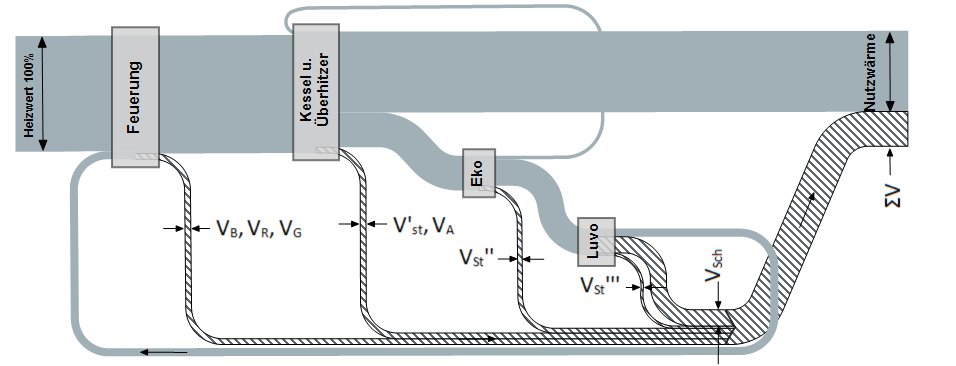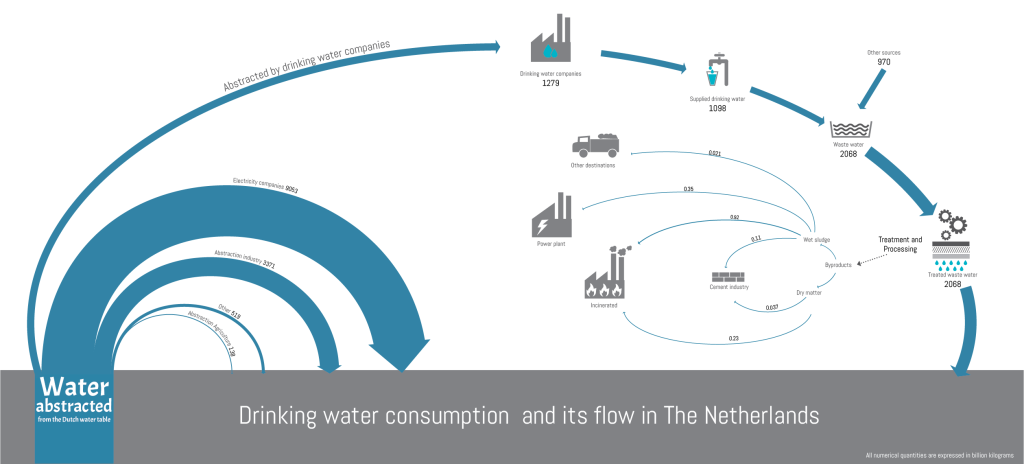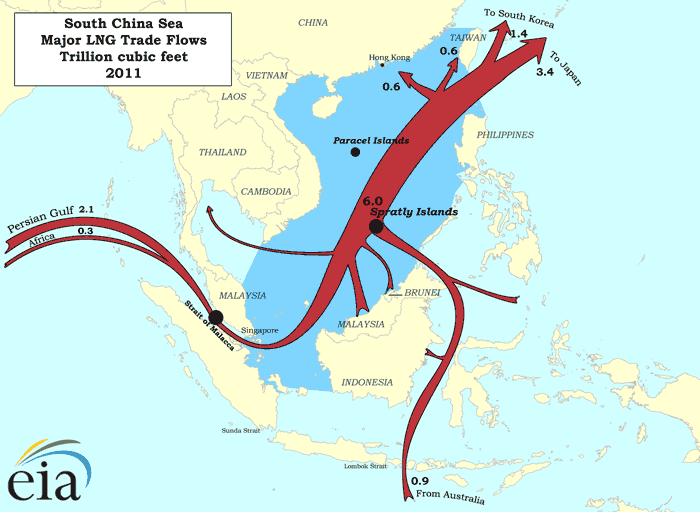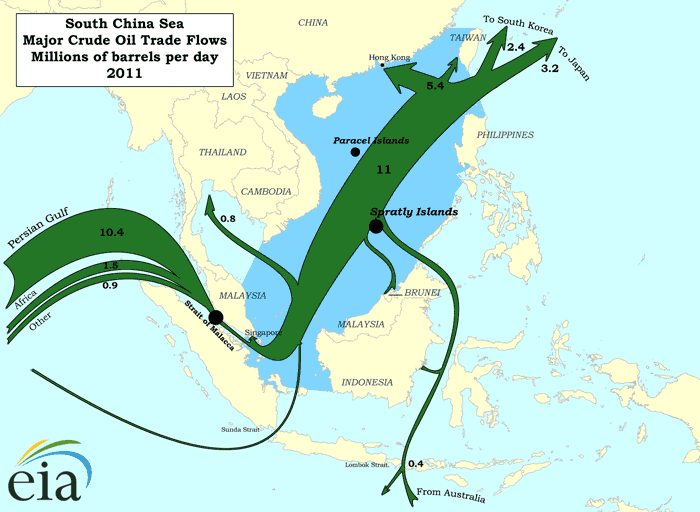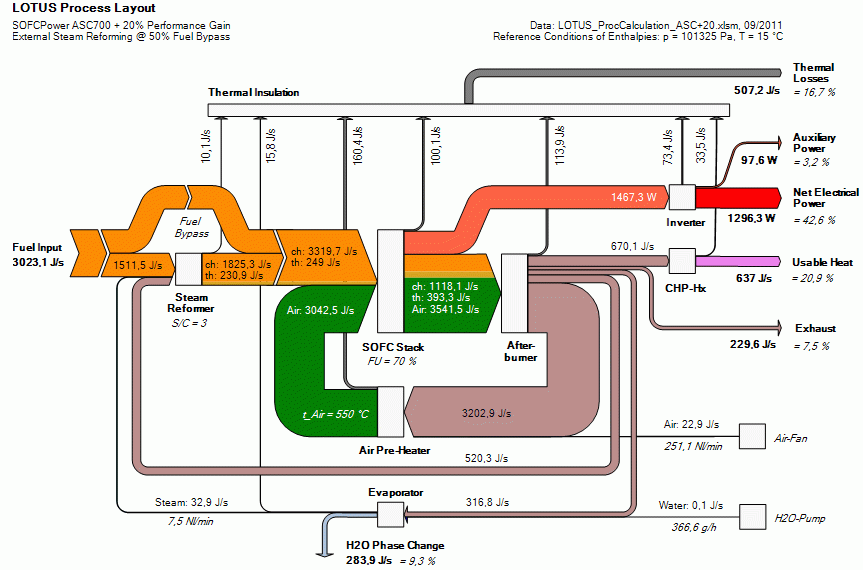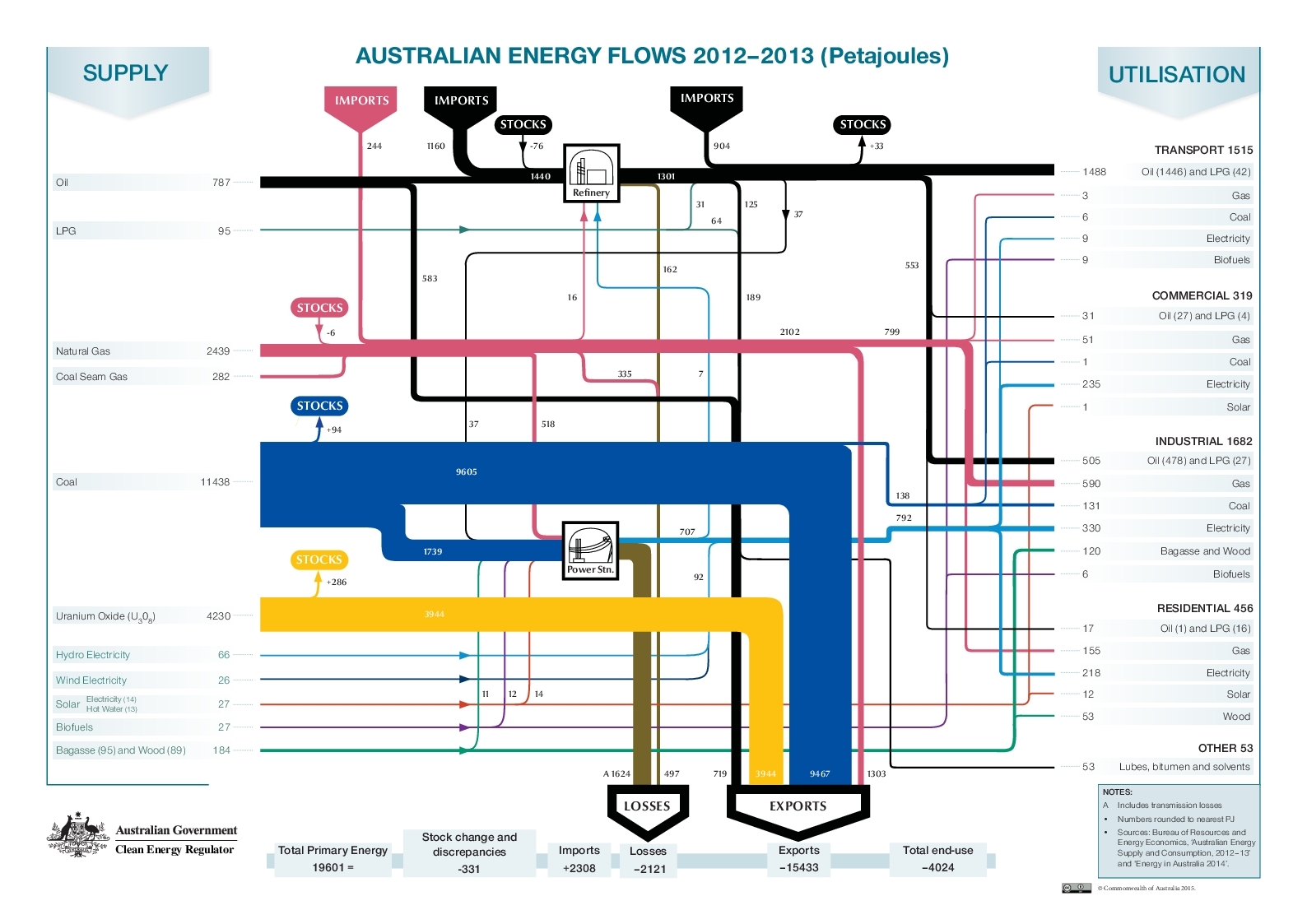‘Dubbel’s Handbook of Mechanical Engineering’ could be considered a bible for mechanical engineering students in Germany. Despite its 900 pages it is still called a pocket book (‘Dubbel – Taschenbuch für den Maschinenbau’) in German quite euphemistically. Since it was first published in 1914 by Heinrich Dubbel it has seen some 24 editions and roughly 920,000 copies sold. Since 1994 it is also available in an English translation from Springer Publishers.
Someone challenged me, if I could do the above figure from Dubbel’s book (“Wärmestrom in einer Kesselanlage”, heat flow in a boiler system). I did various copies and here are the two I like best:
In this version losses are shown in grey with a gradient to dark grey.
The other one sticks closer to the original with the hatch pattern on the arrows representing losses. I had to fill the nodes since the contrast between the colored arrows and the hatched arrows was just too harsh.
I confess I couldn’t do the labels with prime marks and subscript directly in e!Sankey. So I did them in Word, created tiny images and rotated them as work around. Later I found out that the whole image was probably originally intended to be displayed vertically, but rotated to the left only to save space in the book.
Anyway … a fun challenge. I hope you like the result. Let me know your opinion.
